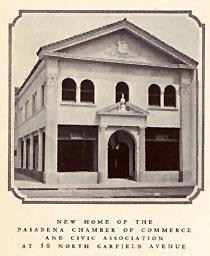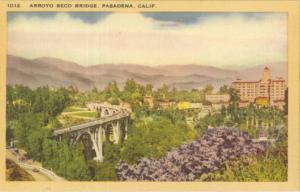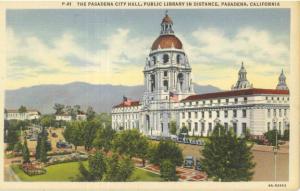The Pasadena Chamber of Commerce was formed in 1888 as the Board of Trade. It was conceived to promote a positive business climate in Pasadena and support our major industry, citrus production.
The Board of Trade was an early collaborator with the Valley Hunt Club in Pasadena’s New Year events. In 1895, when the Valley Hunt Club determined it was unable to continue staging the Rose Parade, the Pasadena Board of Trade saved the event and initiated formation of the Tournament of Roses Association. The Board of Trade also appointed the first director of the new association.

From its inception, the Board of Trade was involved in all facets of Pasadena’s civic, cultural and residential life. The Board of Trade first proposed street tree plans for Pasadena’s downtown business district and proposed the city’s first citizen commission.
In the late 19th century, the Board of Trade first proposed Pasadena operate its own water company. At the same time, the Board supported installation of the first telephone "plant" to provide comprehensive phone service to Pasadena.
The Board of Trade first proposed the construction of the Colorado Street Bridge across the Arroyo Seco, then led the effort to design, finance and construct the iconic bridge connecting the City of Pasadena with our neighbors to the west.
In the early 1920s, the Board of Trade merged into the Pasadena Chamber of Commerce. The Chamber actively supported the Pasadena Civic Center plan that resulted in the grand City Hall, Auditorium and Public Library buildings and led efforts to pass the bond measure necessary to pay for construction. The Chamber also started the Community Chest to fund charitable activities to support Pasadenans in need.
During World War II, the Chamber supported efforts to conserve resources and supported America’s military

Throughout the 1950s and 1960s, The Chamber of Commerce worked to ensure Pasadena’s position as the commercial and economic center of the western San Gabriel Valley. At the same time, the Chamber promoted Pasadena as a corporate headquarters. Our organization helped recruit Parsons Corporation and others to our city. In the 1950s, the Chamber also advocated for construction of Pasadena High School to serve the growing population in the Hastings Ranch area.
Through the remainder of the 20th century, the Pasadena Chamber was an active participant in the recruitment of companies to Pasadena, including bio-technology, internet and other new technology companies. The Chamber was a staunch supporter of bringing light rail transit to Pasadena, a task that was finally accomplished by the Metro Gold Line Construction Authority in 2003.

The Chamber continues to advocate for effective transit options for Pasadena and is a strong supporter of completing the Gold Line to Claremont and beyond.